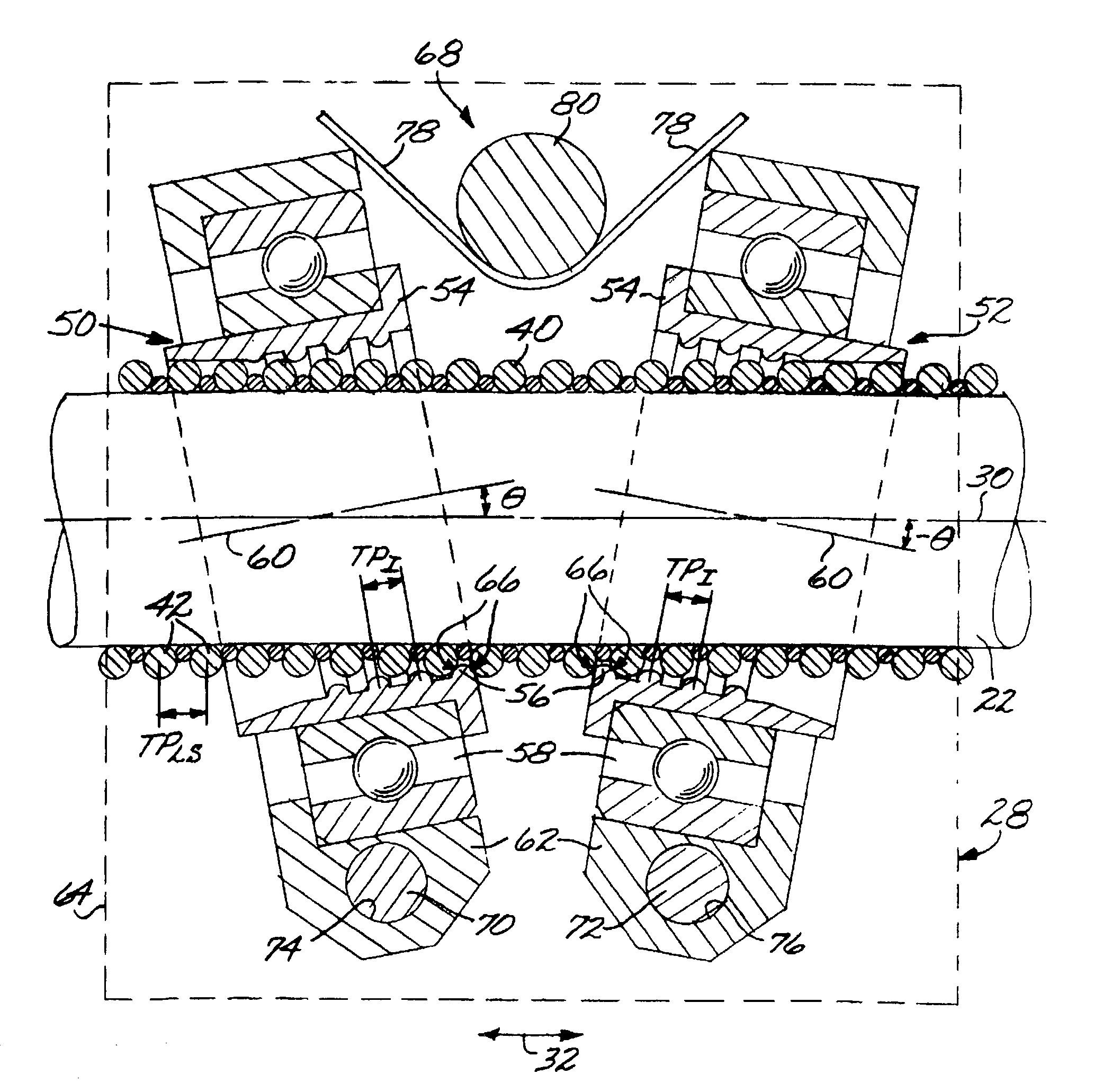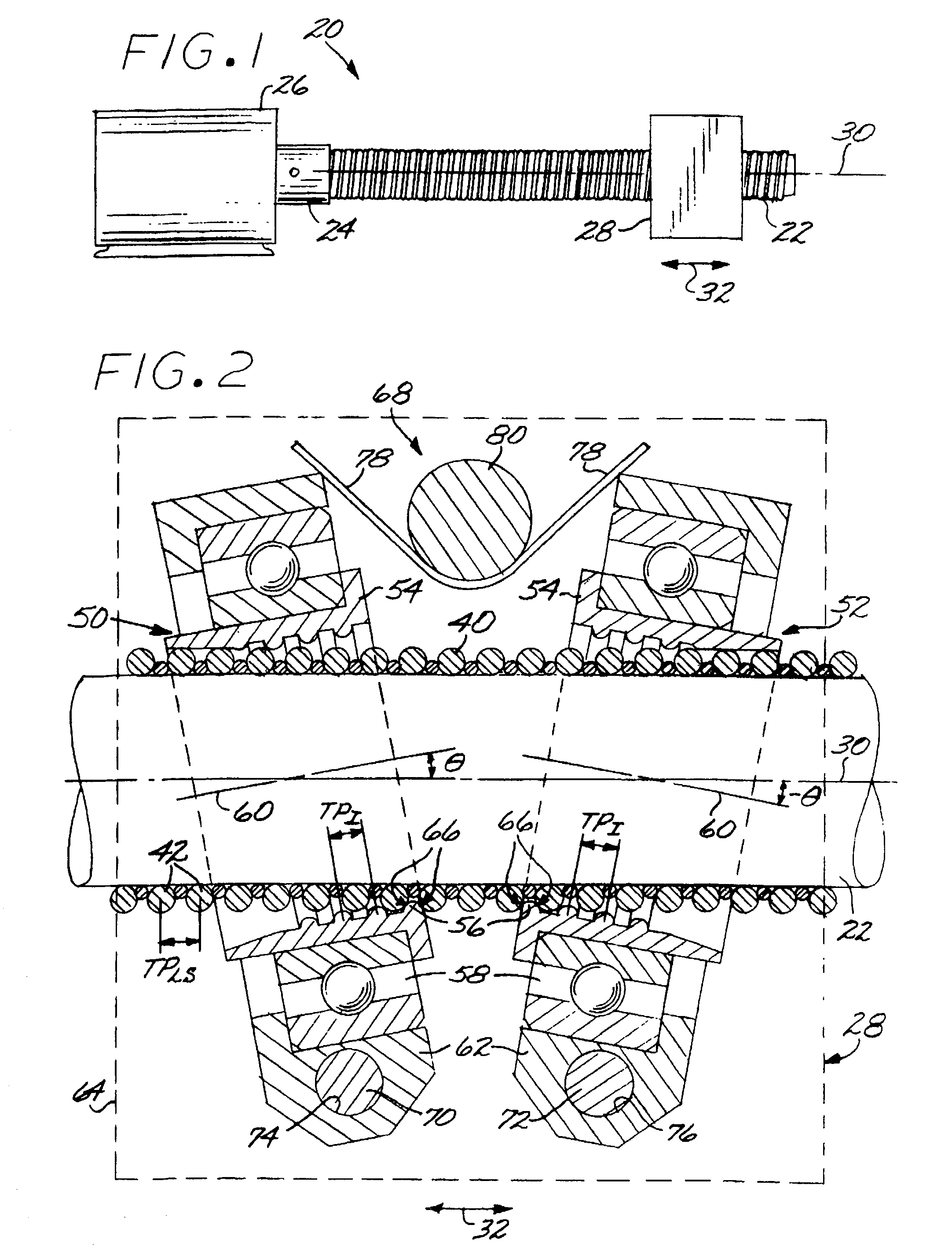Leadscrew mechanical drive with differential leadscrew follower structure
a technology of follower structure and lead screw, which is applied in the direction of mechanical equipment, gearing, hoisting equipment, etc., can solve the problems of limited ability to achieve the desired slow linear movement, physical limitations, and limited rotational output speed of the motor, and achieve the effect of small linear movement ra
- Summary
- Abstract
- Description
- Claims
- Application Information
AI Technical Summary
Benefits of technology
Problems solved by technology
Method used
Image
Examples
Embodiment Construction
[0014]FIG. 1 depicts a leadscrew mechanical drive 20. The leadscrew mechanical drive 20 includes an externally threaded leadscrew 22 that is driven by a rotational output 24 of a motor 26 or other power source. A leadscrew follower structure 28 is engaged to the leadscrew 22. As the motor 26 turns the leadscrew 22 about its rotational leadscrew axis 30, the threaded engagement between the leadscrew follower structure 28 and the leadscrew 22 translates the rotational movement of the leadscrew 22 into linear movement of the leadscrew follower structure 28 in a linear movement direction 32 parallel to the rotational leadscrew axis 30. The leadscrew follower structure 28 is attached to the structure (not shown) that is to be moved in the linear manner.
[0015]FIG. 2 schematically depicts the leadscrew 22 and the leadscrew follower structure 28 of a preferred embodiment of the present approach in greater detail. The leadscrew 22 comprises a helical leadscrew thread 40 having a series of tu...
PUM
 Login to View More
Login to View More Abstract
Description
Claims
Application Information
 Login to View More
Login to View More - R&D
- Intellectual Property
- Life Sciences
- Materials
- Tech Scout
- Unparalleled Data Quality
- Higher Quality Content
- 60% Fewer Hallucinations
Browse by: Latest US Patents, China's latest patents, Technical Efficacy Thesaurus, Application Domain, Technology Topic, Popular Technical Reports.
© 2025 PatSnap. All rights reserved.Legal|Privacy policy|Modern Slavery Act Transparency Statement|Sitemap|About US| Contact US: help@patsnap.com


